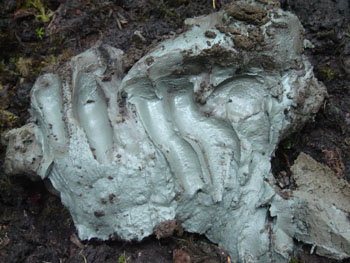Antibiotic Resistant Bacteria Succumb to Treatment with Unique Natural Clay
By LabMedica International staff writers
Posted on 07 Feb 2016
A team of Canadian medical microbiologists has demonstrated the potential use of a unique type of natural clay for treating pathogenic bacteria that have become resistant to the commonly used antibiotics.Posted on 07 Feb 2016
Medicinal and therapeutic use of mineral products has impacted human health for thousands of years, and pure clay minerals, such as smectite and illite, are nanomaterials of geological origin. The intentional consumption of earth materials, such as clays, by humans and animals is known as geophagy, a complex behavior, largely attributed to religious beliefs, cultural practices, psychological disorders, cosmetics, dietary/nutritional needs, and medicinal benefits. Early research focused on the extraordinary adsorptive properties of clay minerals and the health benefits recognized in aiding digestive processes and cleansing and protecting the skin. Due to the small particle size (less than two micrometers), these natural geological products have a vast surface area (hundreds of square meters per gram of clay) with high concentrations of ions and compounds located on the surfaces. Despite the clear, beneficial effects on human health related to ridding the body of foreign substances, few studies have investigated the antibacterial properties of clay minerals.

Image: Naturally occurring clay from Kisameet Bay, Canada, exhibits potent antibacterial activity against multidrug-resistant pathogens (Photo courtesy of Kisameet Glacial Clay Inc.).
Investigators at the University of British Columbia (Canada) worked with Kisameet clay, which was found in a shallow five-acre granite basin located about 400 kilometers north of Vancouver, Canada. This material was valued by indigenous peoples for its therapeutic properties for treatment of a wide variety of disorders including ulcerative colitis, duodenal ulcer, arthritis, neuritis, phlebitis, skin irritation, and burns.
In particular the investigators examined the effect of the clay on the bacteria comprising the ESKAPE group (Enterococcus faecium, Klebsiella pneumoniae, Acinetobacter baumannii, Pseudomonas aeruginosa, and Enterobacter species), which have developed antibiotic resistance and cause the majority of nosocomial infections.
They reported in the January 26, 2016, online edition of the journal mBio that in vitro tests of the clay suspended in water showed that it was capable of killed 16 strains of ESKAPE bacteria from various sources.
"Infections caused by ESKAPE bacteria are essentially untreatable and contribute to increasing mortality in hospitals," said senior author Dr. Julian Davies, professor emeritus in microbiology at the University of British Columbia. "After 50 years of over-using and misusing antibiotics, ancient medicinals and other natural mineral-based agents may provide new weapons in the battle against multidrug-resistant pathogens."
Related Links:
University of British Columbia














